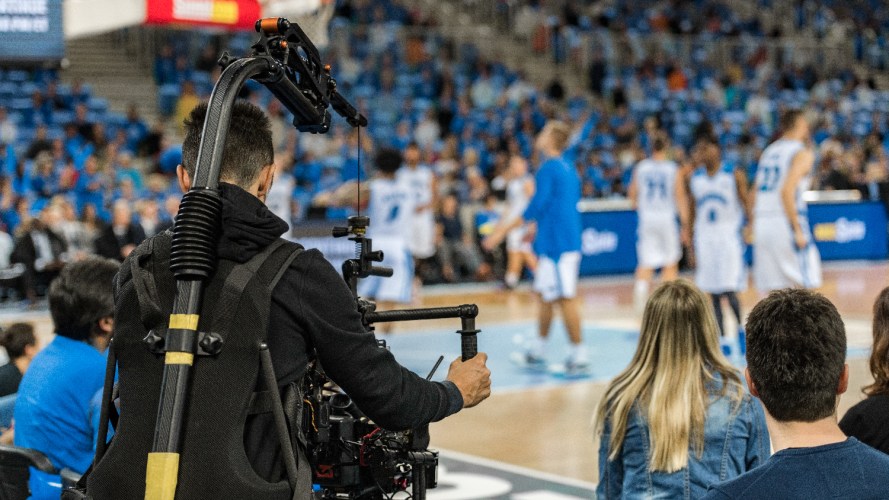What Has the $8 Billion Home Furniture Business Booming? A Focus on Buyer Intent



Furniture retailer Ethan Allen’s CMO shares how they create bespoke customer experiences that anticipate a customer’s needs – and how you can create them, too.

Rodney Hutton
Guest author Rodney Hutton is the Chief Marketing Officer of furniture retailer Ethan Allen.
Since this time last year, monthly sales across furniture and home furnishings stores in the US have soared 181%, and they’re projected to reach over $8 billion by 2024. More than half of us have redecorated to some degree. With Americans spending the majority of their time at home, it’s unsurprising that we’ve invested in upgrading home furnishings. What we in the home furnishing industry have found surprising, though, is how much success we’ve seen serving customers by focusing on their buyer intent.
In addition, 63% of customers said they’ve changed how they obtain goods and services since the beginning of 2020, and 69% of customers want companies to offer new ways to purchase products or services.
At Ethan Allen, as an iconic American Design and furnishing brand, we’ve been a part of this wild ride bringing custom designed comfort and functionality into people’s homes during this crisis period where millions of people have been forced to ask so much more of their home environments. In a changing marketplace with evolving customers, our approach to understanding buyer intent has changed, too.
How does data influence the customer experience?
Hear from CMOs who are getting more out of their marketing data in our latest Marketing in Motion video series.



As the Chief Marketing Officer (CMO) of Ethan Allen, I’m focused on helping my team manage our brand’s outbound and inbound customer experience across the multiple interactive journeys and marketing platforms that inform a transaction. With customers calling the shots, it’s up to my team to use all the data available to us to create positive experiences and keep up with always-changing expectations.
But our job is no longer about bringing customers along for the ride with cookie-cutter paths to purchase. With a wealth of technology and a proliferation of media channels, consumers are now in the driver’s seat, telling us where and how they’d like to communicate.
Read on to learn more about how we’re interacting with customers successfully at Ethan Allen, and how you can create meaningful experiences for your customers, too.
Deliver on the expectation of choice
While Ethan Allen’s marketing strategies have come a long way thanks to digital transformation, we still have room to improve how we use data. The sky is truly the limit, as digital marketing technology is constantly evolving.
A data-centric approach is a growing challenge for companies who collect and analyze huge amounts of data from multiple customer touch points and channels. The stakes are incredibly high: we have to analyze and take action in real-time to capitalize on buyer intent and ensure a satisfactory experience.
Savvy Marketers are increasingly placing the value of a positive brand experience on par with a transaction combining analysis with messaging to achieve both:
Analyzing customer data to anticipate intent
+
Delivering personalized relevant communication and information
=
A positive brand interaction and/or transaction
Whether we’re ready to admit it or not, this agility is now table stakes for marketers. Customers have the expectation of choice and setting preferences. The onus is on brands to follow through and deliver on those expectations.
You’ll recognize this power of choice across media, even outside of retail. For example, my wife likes to sit down and read a print newspaper. I log on to news publications’ websites to read full stories. My son prefers just the headlines and highlights in short, digestible bullet points. That’s why news publications have different platforms available, and the marketing that each of us receives is bound to be different based on what a publication knows about our preferences.
Everyone has a preferred method of consuming media, and that now extends into our consumption of marketing and advertising, too. Being able to provide that is the current definition of a personalized consumer journey in retail and beyond.
Marketing is not one-size-fits-all
I built most of my career in high-end fashion retail. For many years, the standard (and effective) approach was to market unilaterally with messages catered just to the top segment of your customers, with the understanding that it would trickle down to the rest of your customer base.
The concept of luxury marketing just to high-budget customers is no longer the best path forward. Now our approach is to take parallel paths in reaching different segments of customers in the ways that resonate most with what’s important to them. That means we no longer send the same messages to all of our customers and just hope for the best.
An established customer with a higher budget, a large house, or a family may not have the same preferences or needs as a Millennial furnishing their first studio apartment. Customers are all unique, and they deserve to be treated as such with meaningful experiences. Brands will continue to move away from this monolith of messaging, and move toward messaging with specific intent for a specific subset of buyers.
Success for marketers will increasingly be measured by how they create an individual message to segments of their consumer base across multiple platforms. We’re now laser-focused on buyer intent and consumer choice, and we engage them accordingly. It’s an expansion of marketing beyond a traditional one-size-fits-all approach, and toward a more inclusive, personalized future.
Measure marketing performance in real-time
Not only has our approach to delivering messages changed, but our methods of measuring performance have transformed along with the technology. Any marketer who’s had to march into the C-suite and make their case for marketing dollars can tell you firsthand how performance metrics have transformed the industry.
Measuring performance used to be a retroactive, post-mortem activity that occurred after a campaign had ended and the money had been spent. It was an after-the-fact evaluation of how things went, with some discussion around what can be improved moving forward.
Now, after true digital transformation and with new tools, we can measure performance in real-time and optimize messaging, media, delivery, and spend while our messages are in market for optimum results. It’s lightyears more sophisticated — and useful — than the ways we used to measure.
With measurement starting so much sooner in the customer journey, we’re using data as a sort of GPS to make sure we’re staying on track. If a customer’s journey takes a wrong turn and they start to fall off or disengage, we can use data to bring them back on the path to purchase. Interceding much earlier in the purchase cycle makes it easier to keep customers informed and engaged.
Collecting data and interpreting buyer intent is a superpower we have now. If a consumer pulls three similar products into a compare and contrast tool, we know that they’re trying to make a decision between products and they’re past the stage of casually browsing. That signals that we should deliver bottom-of-funnel messages to help guide them toward purchase. Early engagement is a game-changer that depends on digital transformation tools.
Learn how to use data to create better customer experiences
View our third episode of Marketing in Motion, a thought leadership video event of CMOs sharing what works – and what doesn’t.


























